Daya Shankar Pandey
Artificial neural network based modelling approach for municipal solid waste gasification in a fluidized bed reactor
Feb 05, 2018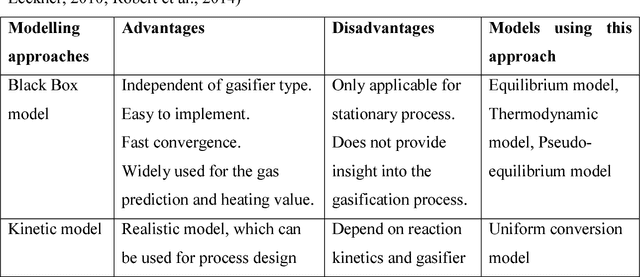
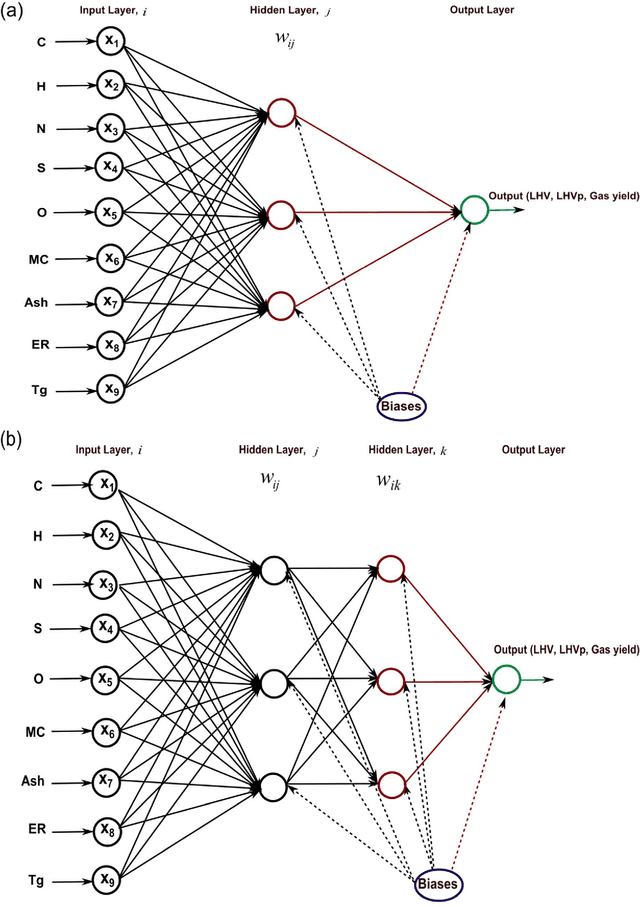
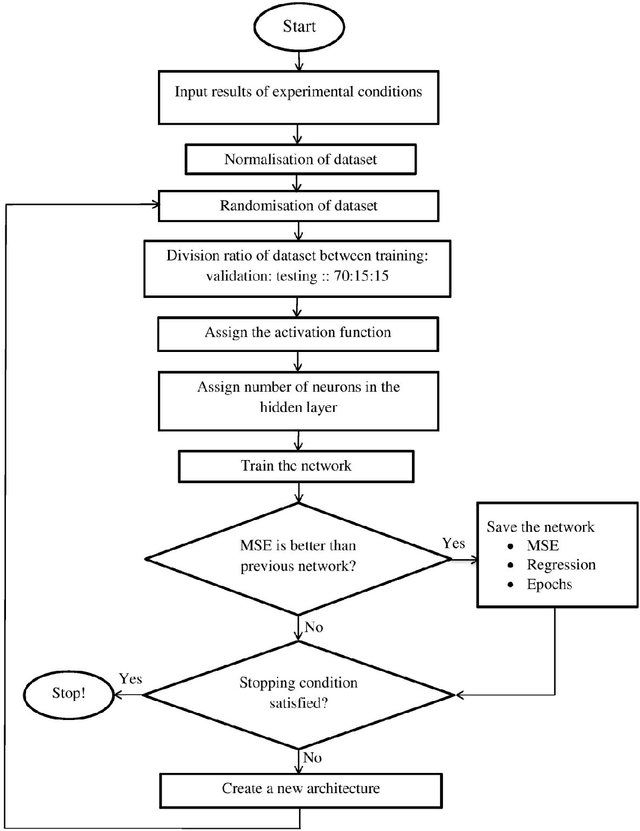
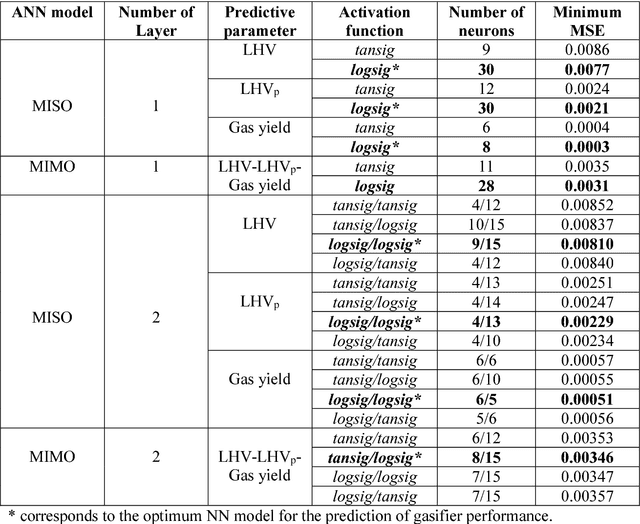
Abstract:In this paper, multi-layer feed forward neural networks are used to predict the lower heating value of gas (LHV), lower heating value of gasification products including tars and entrained char (LHVp) and syngas yield during gasification of municipal solid waste (MSW) during gasification in a fluidized bed reactor. These artificial neural networks (ANNs) with different architectures are trained using the Levenberg-Marquardt (LM) back-propagation algorithm and a cross validation is also performed to ensure that the results generalise to other unseen datasets. A rigorous study is carried out on optimally choosing the number of hidden layers, number of neurons in the hidden layer and activation function in a network using multiple Monte Carlo runs. Nine input and three output parameters are used to train and test various neural network architectures in both multiple output and single output prediction paradigms using the available experimental datasets. The model selection procedure is carried out to ascertain the best network architecture in terms of predictive accuracy. The simulation results show that the ANN based methodology is a viable alternative which can be used to predict the performance of a fluidized bed gasifier.
* 34 pages, 11 figures
Global solar irradiation prediction using a multi-gene genetic programming approach
Mar 03, 2014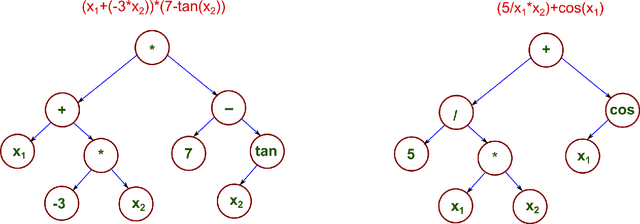
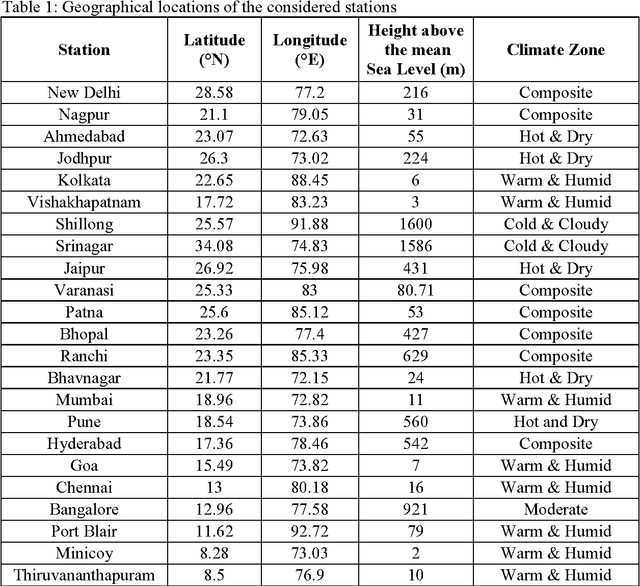
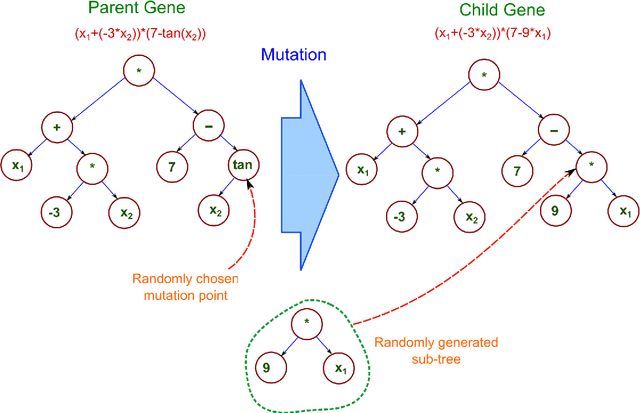
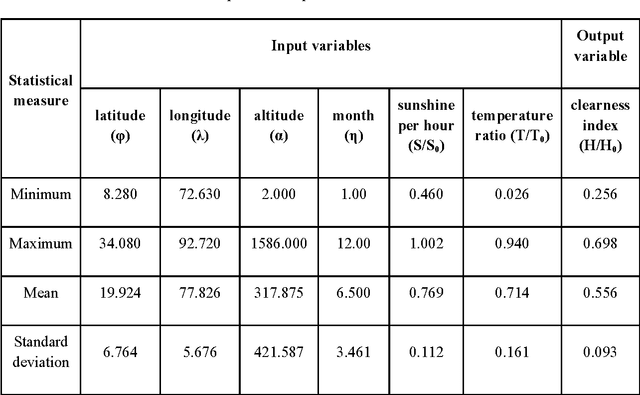
Abstract:In this paper, a nonlinear symbolic regression technique using an evolutionary algorithm known as multi-gene genetic programming (MGGP) is applied for a data-driven modelling between the dependent and the independent variables. The technique is applied for modelling the measured global solar irradiation and validated through numerical simulations. The proposed modelling technique shows improved results over the fuzzy logic and artificial neural network (ANN) based approaches as attempted by contemporary researchers. The method proposed here results in nonlinear analytical expressions, unlike those with neural networks which is essentially a black box modelling approach. This additional flexibility is an advantage from the modelling perspective and helps to discern the important variables which affect the prediction. Due to the evolutionary nature of the algorithm, it is able to get out of local minima and converge to a global optimum unlike the back-propagation (BP) algorithm used for training neural networks. This results in a better percentage fit than the ones obtained using neural networks by contemporary researchers. Also a hold-out cross validation is done on the obtained genetic programming (GP) results which show that the results generalize well to new data and do not over-fit the training samples. The multi-gene GP results are compared with those, obtained using its single-gene version and also the same with four classical regression models in order to show the effectiveness of the adopted approach.
* 31 pages, 16 figures, 5 tables
 Add to Chrome
Add to Chrome Add to Firefox
Add to Firefox Add to Edge
Add to Edge